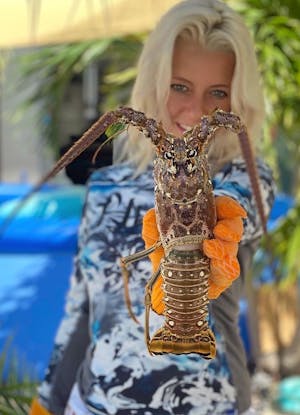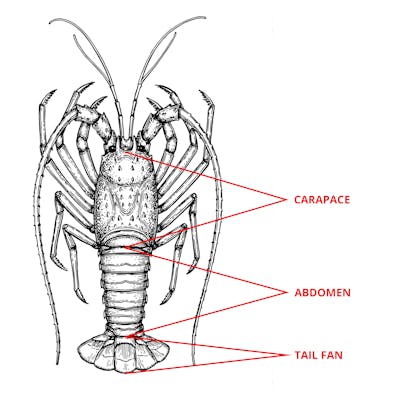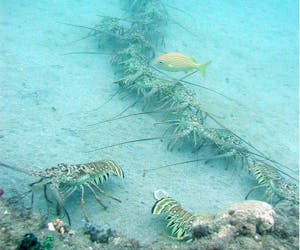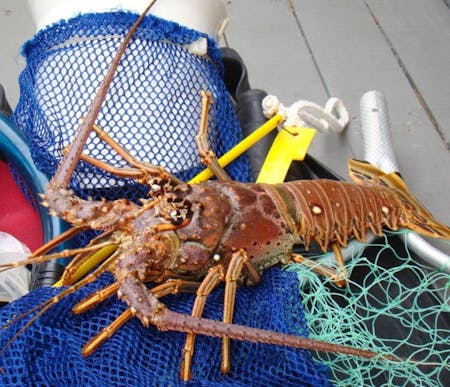A true seasoned minimalist freediver will be able to swoop down, grab one with their bare hands, measure it, and bring it up to add to the catch bag or cooler. If you’re one of those...we all want to go lobstering with you!
For the rest of us, it’s time to grab your gear and hone your skills.
First, never, never, never, never, never (did we say NEVER?) use a spear of any type or anything that will crush or penetrate the exoskeleton when lobstering.
Now that we got that no-no out of the way, let’s get on with it. Spotting the lobster is a talent. You have to get close to the rocks and reefs to look in all the nooks and crannies - that’s where they hide. As a responsible diver, this is where refining your skills comes into play. You want to hunt and take home lobster without harming the reefs and aquatic environments. It’s a balance and it’s easily achievable with a little effort.
Many find it easier to hunt these crustaceans at night. This is because these creatures are more active at night and more likely to come out of their hiding spots. And even when they’re hiding at night, when you shine your dive light you’re gonna see their eyes glow. If you shine your light in a slow, smooth, sweeping motion, you’re less likely to scare them back into their hiding spot.
Once spotted, decide if you’re going to try and free-hand it, use the snare, or go with the tickle stick and net. No matter which method you use, you get one shot. If it gets away from you, you will likely chase it to its next hiding place and try again. Although, they’re fast so unless you’re equally quick or have a good spotter, they might be gone, baby, gone.











